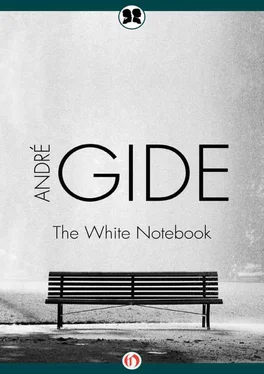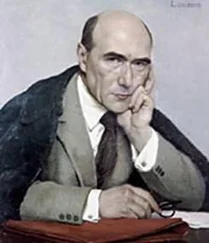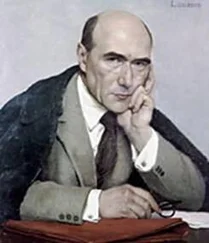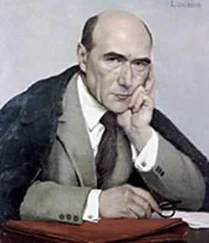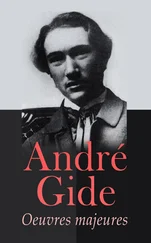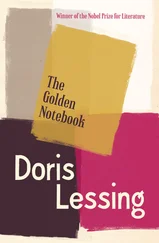André Gide
The White Notebook
“It was not only my first work, it was my summation,” wrote André Gide in If It Die (1926), and the truth of his statement concerning The Notebooks of André Walter was borne out by his intimate writings, some of them not published until after his death. The White Notebook and its Manichean twin The Black Notebook were published in one volume in 1891 (the author was supposed to have died after asking a friend to decide whether or not the notebooks should be published posthumously). Gide had misgivings about allowing the Notebooks to be reprinted later (1930) as one of his Representative Works, but as he noted in a preface, his concern was purely aesthetic and in the early work he probably had put most of himself. Those who have read Et nunc manet in te, published in 1951, the year of his death, will agree.
Gide once complained that La Bruyère painted men as they were but without telling us how they became what they were. Gide’s works are one sustained attempt to understand and explain himself. The White Notebook, his first experiment in self-analysis through the medium of art and the first stage in his quest for authenticity, is a projection onto the printed page of the inner conflicts of André Walter, the ill-starred double of André Gide. Walter’s passions and conflicts, his temptations and anguish, his eventual triumph over demoniac forces through a mystic, ideal love yield a portrait of Gide’s adolescent ego. The portait suggests the direction of his subsequent development.
For months he had nurtured the notion of writing the Notebooks, but not until late spring in 1890 did he begin to work systematically on the project. At that time he was twenty and felt not only that the crisis which he was attempting to depict was typical but also that the world was waiting for his contribution. He isolated himself from the world by moving into a chalet not far from the famed Carthusian monastery near Grenoble in southeastern France. When he set out in May, 1890, he was convinced that in order to complete his work he must find seclusion.
Not since the death of his father ten years earlier had he been separated from his mother for as long as twenty-four hours. The letters which he exchanged with her and the notebooks in which he recorded his comments on his readings provide many details concerning the period of the writing of the Notebooks.
Because of his admiration for the writings of Flaubert and Goethe, the work originally published as The Notebooks of André Walter might well have been assigned another title. Gide vacillated between Allain (or Alain) and The New Sentimental Education in his search for an appropriate title. The influence of Flaubert is also seen in the choice of a Breton hero. Furthermore, Gide had read The Sorrows of Young Werther, much of it in German, and was certainly aware of parallels between Goethe’s early semi-autobiographical work and his own. The similarity between the names assigned to the two heroes is striking.
In all probability, however, the writer who most impressed Gide during the period of the composition of The White Notebook was neither Flaubert nor Goethe. It was Schopenhauer. The World as Will and Idea, which he first read in 1899, produced in Gide a feeling of “ineffable rapture.” Years later he wrote that he attributed to Schopenhauer his philosophical outlook and his awareness of a second reality behind the appearance of things as well as his passion for music and poetry. The style of The World as Will and Idea appealed to him, as did Schopenhauer’s pessimistic analysis of life, his glorification of art as the great source of revelation of the nature of reality, his identification of the will as the source of anguish, his emphasis on the fundamental antagonism between dream and reality, and his advocacy of mortification of the will to live. The influence of Schopenhauer also shows up in the form — or formlessness — of The White Notebook.
Like Schopenhauer, Gide found reality illusory and equivocal. For Walter truth is subject to the will (things become true). His conflicts are always in the inner life, not in the outer world. Reality is transformed and transcended by his primary vision. When asked late in life whether his wife had served him as the model for Alissa, the heroine of Strait Is the Gate, Gide answered, “She became Alissa.” His reply is characteristic and highly significant. The White Notebook sets the pattern of symbolic transformation through which he was to objectify throughout his lifetime the tensions and conflicts that motivated his creativity.
The psychological forces involved in the transformation of his conflicts and tensions are detailed in a recent study by Dr. Jean Delay, The Youth of André Gide (abridged and translated by June Guicharnaud, 1963). Dr. Delay diagnoses Gide’s neurosis in terms of mother image, narcissism, angelism, etc., and calls attention to his devotion to his mother and to her puritanical code. By her conduct both before and during the period embraced by Walter’s notebooks, she interfered with the normal development of Gide’s libido and caused him to turn to art as the only means of liberating his demons. Through the process of objectifying his inner tensions and conflicts he managed to escape from reality and enter into the realm of the imagination. Art was for him a means of transcending reality.
It is easy to establish parallels between the creatures of Gide’s imagination and the persons who were important in his life. Like André Gide, André Walter is the product of two bloodstreams, two cultures and two temperaments. Like Madeleine, who later became Mme. Gide, Emmanuèle is fearful, withdrawn, in need of André’s protection. Like Gide’s mother, Walter’s mother is pious and imperious, and she tries to prevent the marriage of her son. In both situations André can transcend his situation only by overcoming carnal desire and idealizing his love for both his mother and his companion.
Gide had several reasons for writing the Notebooks. One of these was to enhance his chances of marrying his cousin, Madeleine Rondeaux. It might be well to review the background against which was unfolded the drama of his literary proposal and its part in an even longer drama.
As a child he had manifested an autoeroticism which had caused him to suffer considerable embarrassment and to incur his mother’s antipathy. An ambivalent feeling toward his mother was manifested at an early age. He apparently was happier when living away from her than when living with her. After the death of his father, however, he never left her side until the spring when he started to write the Notebooks. Shortly after her death in 1895, Gide married.
Gide’s mother had opposed the marriage of her son and her niece, Madeleine Rondeaux, and this for several reasons. Aside from the fact that they were first cousins, she felt that her son was too immature and too irresponsible to care for a girl who, though older than he, had suffered much and needed a sense of stability and security which he could not provide. She may also have doubted the sincerity of their love since they had lived for a long time as brother and sister.
Madeleine also had the same valid reasons for rejecting his proposal. Besides, she probably realized that Gide had a false image of her. There is no doubt but that he consistently refused to face the facts, that in his imagination he transformed circumstances, idealized situations, and attributed to her a personality, a psychology, a character which she would scarcely have acknowledged. That the real Madeleine at the beginning of their marriage was not the Alissa in Strait Is the Gate is obvious to anyone who has read Et nunc manet in te (1951). Unable or unwilling to appreciate the advice of his mother and the decision of his cousin, Gide blamed the former for interfering with his plans and continued his campaign to win the hand of the latter. To retain the love of both, he had to renounce physical possession and build an image that would accommodate both.
Читать дальше
